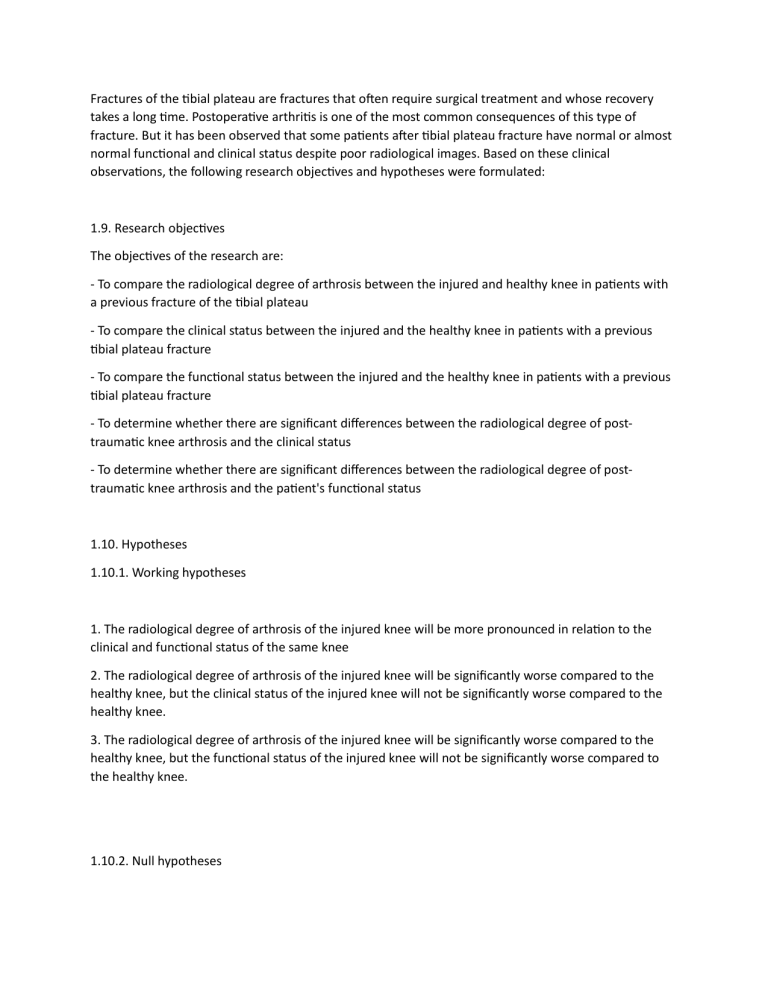
Fractures of the tibial plateau are fractures that often require surgical treatment and whose recovery takes a long time. Postoperative arthritis is one of the most common consequences of this type of fracture. But it has been observed that some patients after tibial plateau fracture have normal or almost normal functional and clinical status despite poor radiological images. Based on these clinical observations, the following research objectives and hypotheses were formulated: 1.9. Research objectives The objectives of the research are: - To compare the radiological degree of arthrosis between the injured and healthy knee in patients with a previous fracture of the tibial plateau - To compare the clinical status between the injured and the healthy knee in patients with a previous tibial plateau fracture - To compare the functional status between the injured and the healthy knee in patients with a previous tibial plateau fracture - To determine whether there are significant differences between the radiological degree of posttraumatic knee arthrosis and the clinical status - To determine whether there are significant differences between the radiological degree of posttraumatic knee arthrosis and the patient's functional status 1.10. Hypotheses 1.10.1. Working hypotheses 1. The radiological degree of arthrosis of the injured knee will be more pronounced in relation to the clinical and functional status of the same knee 2. The radiological degree of arthrosis of the injured knee will be significantly worse compared to the healthy knee, but the clinical status of the injured knee will not be significantly worse compared to the healthy knee. 3. The radiological degree of arthrosis of the injured knee will be significantly worse compared to the healthy knee, but the functional status of the injured knee will not be significantly worse compared to the healthy knee. 1.10.2. Null hypotheses 1. The radiological degree of arthrosis of the injured knee will not be more pronounced in relation to the clinical and functional status of the same knee 2. The radiological degree of arthrosis of the injured knee will be significantly worse compared to the healthy knee, and the clinical status of the injured knee will also be significantly worse compared to the healthy knee. 3. The radiological degree of arthrosis of the injured knee will be significantly worse compared to the healthy knee, and the functional status of the injured knee will also be significantly worse compared to the healthy knee.


